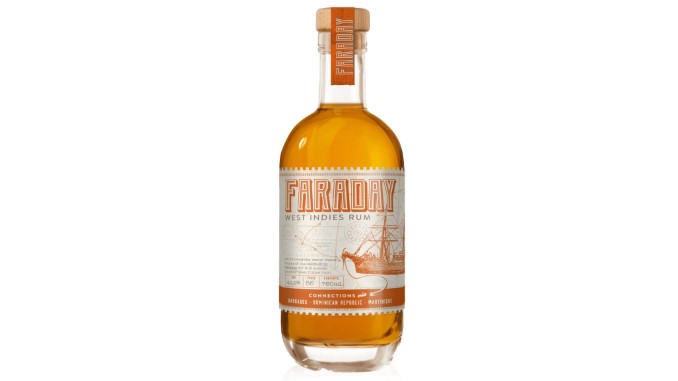
There’s a long tradition in the rum world of sourced blends that bring together various influences from distilleries in a single region, or marry disparate styles from around the globe. These blends have long existed as a lingering relic of colonialism, initially created by imperialist merchants and navies by simply blending rums from various ports to achieve specific profiles, but today they allow non-distiller producers (NDPs) to create complex blends that aim to carve out their own profiles rather than celebrating a single, regional style.
Still, there are certain archetypes into which these blends often fall. You will often see the blending of various aged rums, for instance, including rums produced in both pot and column stills. A bit less commonly, one may see the blending of aged and unaged rums, especially in more affordable blends—the unaged portion may also be a heavier, high-ester pot still rum meant to give the finished blend more complexity. What one doesn’t see particularly often, though, are blends that marry both molasses-based rum and rums produced from fresh-pressed sugar cane juice. Those are two sides of the “sugar cane spirit family tree,” as it were, and although they may both end up being present in the same tiki cocktail, it’s less common to find them blended in the same bottle.
That didn’t stop the makers of Faraday West Indies Rum, however, from doing exactly that. This newer product to the U.S. market is a blend from three different ports that don’t meet particularly often: Barbados, the Dominican Republic, and Martinique, with each rum component reflecting the style of its own region. They are:
Barbados: 5-year-old blend of pot and column still molasses rum from Foursquare. Most Bajan aged rums are “blended” in this nature, having both pot and column distillate.
Dominican Republic: 5-year-old column distilled molasses rum (or “ron”) from Alcoholes Finos Dominicanos.
Martinique: Unaged column still rum from sugar cane juice (rhum agricole) from Distillerie La Favorite.
The final product—named for the cable ship Faraday, which laid the first transatlantic telegraph cables between Europe, the U.S. and the Caribbean—is bottled at 42.5% ABV (85 proof), and stands out as an intriguing sort of experiment. Although I am no stranger to consuming both well-aged molasses rum and rhum agricole at the same time—I like a little agricole in my mai tai, actually—it’s not like I’m simply blending the contents of those two bottles together. These are a couple of extremely different types of flavor profiles, only heightened by the choice to use unaged rather than aged agricole in the blend. One has to wonder how naturally they’ll work together, and what percentage of each component may have gone into the final blend.
There’s only one way to know how it all shakes out, though, so let’s get to tasting.
On the nose, this blend immediately registers as quite sweet, and definitely on the younger side. I’m getting bright, green apple fruitiness and lots of brown sugar, along with vanilla extract and significant ethanol, which has a slightly chemical quality. Cinnamon spice rounds things out, but the nose feels very influenced by the sweeter impressions, especially of slightly artificial vanilla. It’s hard to say how exactly the rhum agricole character is coming through on the nose, as most of the character here is more indicative of younger aged rums.
On the palate, this is also quite sweet, and the youth is definitely making itself felt, but overall it’s not bad. Copious brown sugar and butterscotch is a dominant note, along with vanilla extract, some cinnamon, toasted sugar and just the smallest hints of fresh cane and grass. Unfortunately, the ethanol is again more assertive than you would want, especially for the relatively low proof. Overall, I suspect that the Dominican column still rum may be making up the majority of this blend, and thus becoming the overwhelming force in the flavor profile, while the rhum agricole component is arguably too subtle for most drinkers to really pick up on. Tasting further, there are some nice spice notes opening up over time, with flourishes of anise and licorice, but the sweetness will likewise be difficult for some consumers to get around. My inclination would probably be to use this rum as a mixer in drinks where a sweeter blend wouldn’t be a problem, such as a rum and tonic, but one questions whether you really want to spend close to $50 on a rum for those applications.
All in all, Faraday West Indies Rum is an interesting concept, but the balance between its notably disparate elements doesn’t quite feel in synch just yet.
Distillery: Faraday West Indies Rum
Region: Multi-port Caribbean blend
ABV: 42.5% (85 proof)
Availability: 750 ml bottles, $49 MSRP
Jim Vorel is a Paste staff writer and resident beer and liquor geek. You can follow him on Twitter for more drink writing.